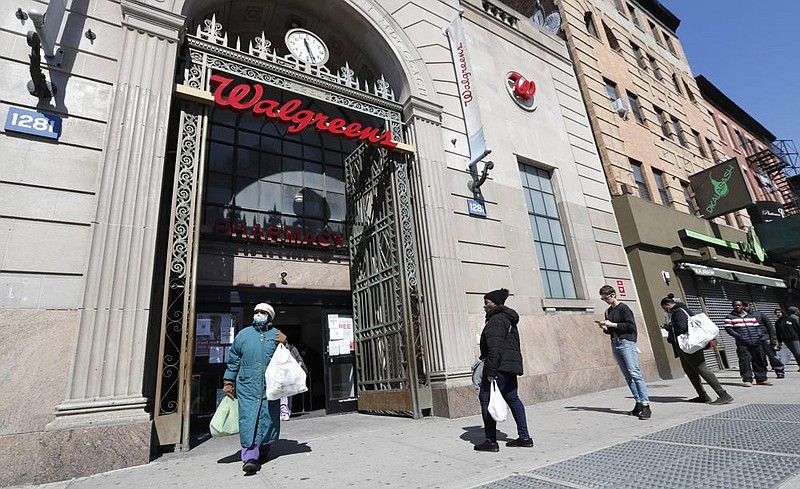The coronavirus pandemic pushed Walgreens to a $1.7 billion loss in the most recent quarter with customers staying home or limiting shopping to essential supplies from grocery stores.
The drugstore chain said Thursday that the rapidly spreading virus took a bite of between $700 million and $750 million from sales, with much of the damage coming from outside the United States.
The company says it plans to cut about 4,000 jobs in the United Kingdom after a sharp drop in its business there and suspend stock buybacks.
More companies of all sizes will soon begin releasing details about their financial performances over the past three months as covid-19 seized economies in Europe, as well as North and South America. Walgreen's quarter ended May 31, encapsulating a three-month period in which consumer activity came to a screeching halt.
[CORONAVIRUS: Click here for our complete coverage » arkansasonline.com/coronavirus]
Walgreens furloughed more than 16,000 employees at the peak of the pandemic in the United Kingdom. Sales at its Boots stores there dropped nearly 28% on a constant currency basis. April foot traffic plunged 85%.
While stores remained open to provide pharmacy services, Boots' profitable beauty and fragrance counters were closed.
Industry analysts expected a substantial hit to profits, but the size of the loss exceeded those expectations.
Shares of Walgreens Boots Alliance Inc. slumped 7.7% on Thursday in New York.
Walgreens booked non-cash impairment charges of $2 billion in the quarter because of its Boots U.K. operating loss and continued uncertainty about how long the pandemic will go on.
The charge illustrated "a remarkable deterioration in asset value," Neil Saunders, managing director for GlobalData Retail, said in a research note.
Prospects for Walgreens' business in the U.K. "are now significantly gloomier than they were at the start of the year," Saunders wrote.
The pandemic accelerated changes planned for its Boots stores, which includes closing optician locations and reducing staff at the U.K. support office. Those changes could mean job cuts exceeding 4,000.
Walgreens posted quarterly earnings of 83 cents per share. Sales grew less than 1%, to $34.63 billion.
Analysts expected per-share earnings of $1.19 and about $34.3 billion in revenue, according to FactSet.
Walgreens Boots Alliance Inc., based in Deerfield, Ill., runs more than 9,200 stores in the United States and has more than 18,750 locations internationally.
Business in the U.S. was markedly better than in the U.K. Sales at established stores climbed 3% compared with last year.
But regions of the U.S., particularly in the South and West, are in the grip of a surge of infections. Governors are putting back into place restrictions that could limit the mobility of potential customers and create more unease about being in stores with other people.
Walgreens said this week that it will make a major change to some of its U.S. stores. It will add primary care clinics staffed by doctors to as many as 700 over the next few years in a bid to play a greater role in managing customer health.
The drugstore chain Thursday introduced a forecast for the current fiscal year, which ends in August. Walgreens expects adjusted earnings of $4.65 to $4.75 per share, an estimate that includes the anticipated impact of covid-19.
Walgreens stores in urban markets fared much worse than rural areas in the quarter, with sales down 18% compared with an 8% increase, respectively. Executives said they haven't seen big differences in areas with intensifying outbreaks.
Walgreens said that a broad decline in visits to doctors' offices and hospitals weighed on prescription volumes. Prescriptions filled at its U.S. drugstores fell 1.3% compared with the year-ago quarter, though volumes have shown "steady improvement" since the end of May.
Costs associated with cleaning stores and boosting employee pay sent selling, general and administrative expenses soaring to $8.3 billion in the quarter from $6.2 billion in the year-ago quarter.
Information for this article was contributed by Angelica LaVito and Aysha Diallo of Bloomberg News; and by Tom Murphy of The Associated Press.

